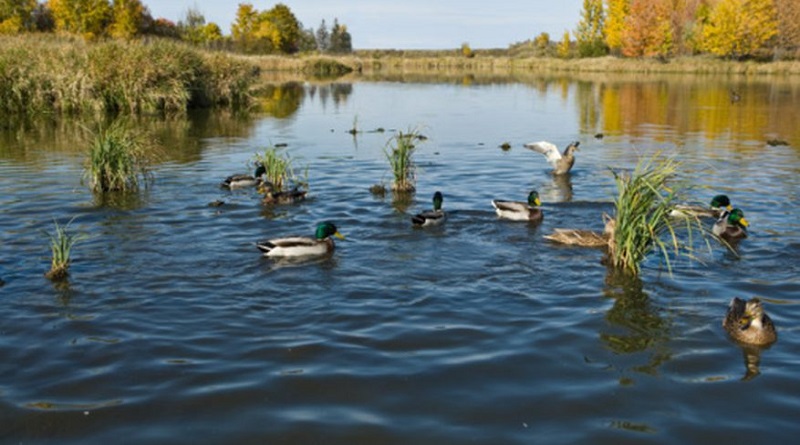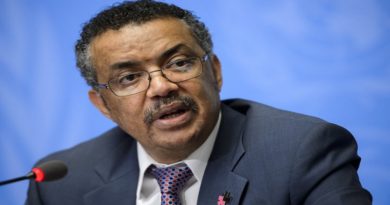Signs of progress on freshwater protection, says UN
Freshwater ecosystems like lakes, rivers and wetlands are essential for human life, health and livelihoods. Also known as inland water bodies or terrestrial water ecosystems, they provide our water for drinking, food, industry and energy. In addition to their productive uses, freshwater bodies are also essential habitats for biodiversity: although freshwater makes up only 0.01 per cent of the world’s water it supports almost 6 per cent of its entire described species.
This places these ecosystems in a unique position.
“Their essential role in society and multiple uses mean freshwater ecosystems are disproportionately important,” says Lis Mullin Bernhardt, freshwater ecosystems expert at UN Environment. “But unfortunately, they are also disproportionately under threat in that they bear the brunt of human activity, climate changes and a number of other factors.”
Over the past 40 years, freshwater species populations have declined by 81 per cent – more than double the rates seen in species both on land and in the oceans. At the same time, it’s estimated that, since 1900, around 70 per cent of inland water bodies have disappeared, with even higher numbers in some regions, such as Asia. Inland wetlands, we know, are disappearing at a faster pace than coastal ones.
Compounding this loss of extent, it is estimated that 80 per cent of wastewater worldwide is dumped directly back into water bodies completely untreated, leading to serious ecosystem and human health impacts.
The impacts caused by the loss of freshwater ecosystems and their functionality are a reality many countries already understand all too well. Webster Chiyangwa, of the Embassy of the Republic of Zimbabwe to UN Environment, has long been a passionate advocate for increasing efforts to protect and restore significant freshwater ecosystems such as the ones in his country. “In Zimbabwe,” he explains, “we are witnessing the trade-offs between infrastructure development and ecosystem protection, for example when essential wetlands are drained in order to create residential buildings and shopping malls.”
He said many development projects have seen wetlands, which provide natural purification or flood protection, drained to build infrastructure intended to boost the economy.
“What we find harder to understand, however,” he continues, “is the critical role those wetlands are playing in terms of flood protection, water provision to rivers which are used for hydropower, and the regulation of water provision. The result can lead to poor water regulation, including flooding, and the spread of waterborne disease.”
Responding to requests such as these from developing countries, delegates gathered at the UN Environment Assemly in December took historic steps to protect and restore water-related ecosystems. In a ground-breaking resolution, UN Member States took measures to restore and protect water-related ecosystems, including from human activities and climate change, so that they can continue to sustainably provide the services and goods that countries need to develop in ways that are both socially and environmentally sustainable.
“In Zimbabwe, we are witnessing the trade-offs between infrastructure development and ecosystem protection, for example when essential wetlands are drained in order to create residential buildings and shopping malls.”
Building on a request from 2012, the UN Environment Assembly urged countries to build upon the newly launched Framework for Freshwater Ecosystem Management to take steps to monitor and protect their water-related ecosystems.
According to Joakim Harlin – head of the Freshwater Unit at UN Environment and the one who led the finalization of the Framework for Freshwater Ecosystem Management – it is clear these water bodies are under direct threat from development, and that the situation is further exacerbated by land conversions and climate change. Freshwater bodies lie primarily within countries’ borders and thus within their mandate and ability to do something to protect them for sustainable uses such as drinking, irrigation, tourism, fisheries, bathing or industry. The Framework serves as guidance for countries to monitor, protect and restore their key water-related ecosystems.
Hartwig Kremer, head of the GEMS/Water water quality monitoring programme, notes the urgent need for water quality monitoring to address water pollution. “We simply do not have enough data for most countries to make informed decisions on the extent, impact and sources of their freshwater pollution. Our estimates show that up to one third of rivers in developing countries are suffering from severe pathogenic pollution, often linked to a lack of safe sanitation access and treatment and to the spread of waterborne disease. But much more information is needed, which is where basic monitoring systems, and the capacity to set up and maintain them, come into play.”
He also notes that recent assessments (A Snapshot of the World’s Water Quality, UNEP 2016) show most terrestrial water bodies are still in reasonable condition, which underlines the importance of what he terms “disruptive technologies” to take new measures to detect, protect and restore affected water bodies and maintain those that are in good condition.
The Environment Assembly’s recent resolution on water pollution, and the Framework referenced in it, is both important steps toward this goal.




